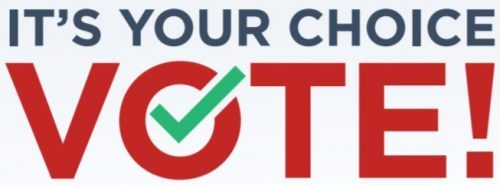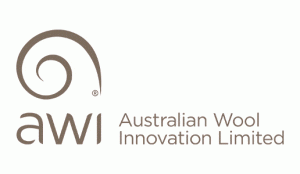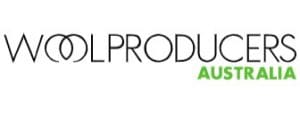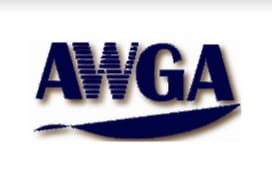 KEY wool grower groups are already sceptical of Australian Wool Innovation’s commitment to recommended changes to the industry’s WoolPoll process and structure, after the release of a review report today.
KEY wool grower groups are already sceptical of Australian Wool Innovation’s commitment to recommended changes to the industry’s WoolPoll process and structure, after the release of a review report today.
The Department of Agriculture, Water and Environment this morning released its final report on its review of WoolPoll, making 10 recommendations covering levy rates, AWI involvement and WoolPoll panel membership it believed can mostly be implemented for the 2021 WoolPoll.
“A detailed approach for adopting the recommendations, including responsibilities and timing, will be agreed between AWI, the department and wool industry leaders via the Wool Industry Consultation Panel,” the report said.
Key recommendations included that the department pursue amendments to the Wool Services Privatisation (Wool Levy Poll) Regulations 2003, to require the WoolPoll ballot paper to list the following levy rates: zero, the current levy rate, 0.5 percent below the current rate, 0.5pc above the current rate, and a supplementary rate, if needed, to be proposed by AWI.
The report also recommended that the department pursue amendments to the Wool Services Privatisation (Wool Levy Poll) Regulations 2003 to require AWI to provide its recommendation of a particular levy rate to growers separate from the Voter Information Memorandum.
Other recommendations suggested that AWI test levy payer support for a five-yearly poll, that AWI and Meat & Livestock Australia explore aligning their strategic planning processes and that the research and development/marketing spend split decision stay with AWI.
The report also recommended that AWI directors not have any seat on the WoolPoll Panel and that the panel member select a chair, rather than AWI.
The WoolPoll Review recommendations
Recommendation 1
The focus of engagement in the lead-up to future WoolPolls should shift to more online activities. Australian Wool Innovation (AWI) and the 2021 WoolPoll Panel should prepare a plan for a ‘digital roadshow’ for the 2021 WoolPoll, drawing on lessons learned from successful digital engagement during the COVID-19 pandemic.
Recommendation 2
AWI should provide wool levy payers with additional information that clarifies the optional preferential voting process, as part of the voting instructions.
Recommendation 3
The preference for a 5-yearly poll should be tested with wool levy payers through an additional question on the 2021 WoolPoll ballot paper. This would inform government’s consideration of regulatory amendments that would be required to enact such a change.
Recommendation 4
AWI should undertake scoping work, in partnership with Meat and Livestock Australia (MLA), to explore the considerations and develop potential operational models for aligning their strategic planning processes.
Recommendation 5
The ‘general services’ levy model should be retained, with decisions about how levy funding is split between research and development, marketing and other activities to remain a matter for the AWI Board. AWI should engage with levy payers, to canvas views to inform the board’s decision and to explain the rationale for the funding split for a particular period once adopted.
Recommendation 6
AWI should develop a framework of diverse and accessible avenues to engage in a two-way dialogue with levy payers, beyond WoolPoll. To create a strong feedback loop, this framework should facilitate levy payers to provide to AWI their priorities for future levy expenditure, as well as receive from AWI detailed information about the outcomes of past levy investments.
Recommendation 7
The department should pursue amendments to the Wool Services Privatisation (Wool Levy Poll) Regulations 2003, to require the WoolPoll ballot paper to list the following levy rates: zero, the current levy rate, 0.5 percent below the current rate, 0.5pc above the current rate, and a supplementary rate, if needed, to be proposed by AWI.
Recommendation 8
The department should pursue amendments to the Wool Services Privatisation (Wool Levy Poll) Regulations 2003 to require AWI to provide its recommendation of a particular levy rate to growers separate from the Voter Information Memorandum.
AWI’s recommendation should be presented to growers as a stand-alone document, which could be included in the voting pack.
Recommendation 9
The process of forming a selection committee to appoint all members to the WoolPoll Panel should be adopted as an ongoing feature of WoolPoll. The selection committee should comprise the independent Chair of the Wool Industry Consultation Panel and a representative from the AWI board and the Department of Agriculture, Water and the Environment. Once appointed, the members of the WoolPoll Panel should select the panel chair from among themselves. AWI should set out the selection committee process in the WoolPoll Panel Terms of Reference, which should be made publicly available.
Recommendation 10
To ensure the WoolPoll Panel is able to execute its independent verification function, AWI directors should not hold membership on the panel. AWI directors should act as engaged observers. AWI should continue to facilitate access to information, expertise and provide secretariat support to the Panel. AWI should reflect this in the WoolPoll Panel Terms of Reference, which should be made publicly available.
AWI welcomes report and commits to ‘working closely’
 A spokesman for Australian Wool Innovation said the company welcomed the Department of Agriculture, Water and Environment’s final report of the WoolPoll Review.
A spokesman for Australian Wool Innovation said the company welcomed the Department of Agriculture, Water and Environment’s final report of the WoolPoll Review.
“AWI looks forward to working closely with the department and the Wool Industry Consultation Panel to plan for the adoption of the recommendations.
“Listening to and consulting with growers through the Wool Industry Consultation Panel and also the Wool Consultation Group is an essential part of what ÁWI does,” the spokesman said.
“Our sole purpose is to deliver better outcomes for Australia’s wool growers.
“This final report of the WoolPoll Review is another important step in guiding us to do that job even better.”
No specific responses were received addressing Sheep Central’s questions to AWI chief executive officer and chair Colette Garnsey on whether AWI would commit to implementing the review’s recommendations for the 2021 WoolPoll. They were also asked if AWI agreed with all the review’s recommendations, including the levy option and WoolPoll panel selection and membership suggestions, a poll on the 5-yearly WoolPoll question, and the AWI-MLA scoping on strategic alignment. The AWI leaders also did not respond to whether AWI believed it needed to engage with levy papers on the R&D and marketing split and to ascertain levy payers’ priorities for expenditure, or whether it should provide its recommendation of a particular levy rate to growers separate from the Voter Information Memorandum.
WPA has concerns about report’s implementation
 WoolProducers Australia chief executive officer Jo Hall welcomed some of the report’s recommendations, but expressed concerns about their likely implementation.
WoolProducers Australia chief executive officer Jo Hall welcomed some of the report’s recommendations, but expressed concerns about their likely implementation.
“The final WoolPoll Review report hasn’t delivered a lot.
“While we welcome the recommendation regarding the pre-determined levy rates as that should remove some of the politicking on the issue, it is unclear on what basis AWI can propose an alternate levy rate and who would ultimately approve or reject this,” she said.
“We know from previous WoolPolls, where the ‘centre stage effect’ was used, which explained why there continued to be two levy rates offered above the status quo, despite continued low votes for either of those options.”
Ms Hall said WoolProducers is extremely disappointed that there was not a binding recommendation on the alignment of strategic planning periods between AWI and MLA and that a question will be posed through next year’s WoolPoll process to levy payers.
“This is an unfortunate waste of time.”
She noted that the report recommended that AWI undertake ‘scoping work with MLA to explore potential operational models for alignment’.
“AWI, on the back of its annual report, is currently stating how its income has taken such a hit this past year, so collaborating with MLA and returning bigger bang for levy payers through this partnership approach should be a given, which would also be of assistance to AWI’s finances.
“Why wait until the end of next year to get growers opinions when that feedback was pretty strong throughout this process?” she asked.
“WoolProducers also have concerns regarding the implementation of these recommendations, as that is to be agreed upon by the Department, AWI and the Wool Industry Consultative Panel (WICP), which is basically the same model that has been used to implement the contentious recommendations from the 2018 Review of Performance, which hasn’t delivered.”
AWGA cites AWI culture as obstacle to implementation
 Australian Wool Growers Association director, WICP member and former WoolPoll panellist Robert Ingram echoed the concerns of WoolProducers about the report’s implementation.
Australian Wool Growers Association director, WICP member and former WoolPoll panellist Robert Ingram echoed the concerns of WoolProducers about the report’s implementation.
“In terms of the reform process, it’s a good start,” he said.
“We’re in exactly the same position as where we were at with the EY Review.
“The EY Review was to be implemented in consultation with industry, with a panel to be set up the recommendations, which never happened,” Mr Ingram said.
“Future performance is likely to reflect past performance, and the past performance of AWI has been ‘we will implement it as we fit’.
“This reflects upon the culture at the top of AWI and until that culture changes we’ve got the same problem.”
Mr Ingram supported AWI and MLA aligning their strategic planning processes as “critical to efficient use of levy funds”.
But on the issue of levy rate options and AWI retaining the right to determine the spending split between R&D vs marketing, Mr Ingram was disappointed the report’s recommendation did not encompass AWGA’s suggestion to firstly consult on, develop and cost AWI’s strategic plan, to determine the required levy rate.
“If you have an open and transparent consultative engagement process to develop your strategic plan, it sets the basis for costs over a five year plan, which automatically determines the split between research and development, and marketing.”
Mr Ingram said the recommendation for AWI to have a “two-way dialogue with levy payers” was a direct rebuff of AWI’s implementation of the EY Review recommendations.
“The two areas they haven’t effectively met are consultation and the tenure of directors.”
He said supported AWI providing its recommendation of a particular levy rate to growers separate from the Voter Information Memorandum.
“I think it’s not a significant action, but it differentiates the discussion around what the rate should be and what the board recommends.
“But if you’ve got a strong strategic plan developed with industry, basically the levy rate based on planned costs is agreed.”
Mr Ingram supported the WoolPoll Panel selection committee, the panel chair and the panel having greater independence from AWI.
“On the face of it (recommendations 9 and 10), it looks likes a more transparent and open approach.”
He supported the panel accepting its chair, as potential for manipulation in the selection committee.
“The key issue then is the independence of the WICP chair and I would like to see the process for selecting the chair of the WICP strengthened and made more accountable and transparent.”
He said WICP members were “over the constant grind” involved in getting independence from AWI into the WICP chair election process, “given that the process for the selection of the WICP has faults.”
Mr Ingram agreed that pre-WoolPoll engagement should have an online focus, but was concerned the rural digital infrastructure is inadequate.
“There are people who are going to disadvantaged because of the government’s lack of action in ensuring reliable digital access across remote and rural Australia.”
He supported AWI providing more information on the WoolPoll preferential voting system as “logical – it’s needed.”
He thought the government would have been able to make a decision on the need for a five-yearly WoolPoll cycle “given the consultation process and the feedback they’ve had”, rather testing this with wool levy payers on the 2021 WoolPoll ballot paper.
Click here to read the WoolPoll Review report.

HAVE YOUR SAY